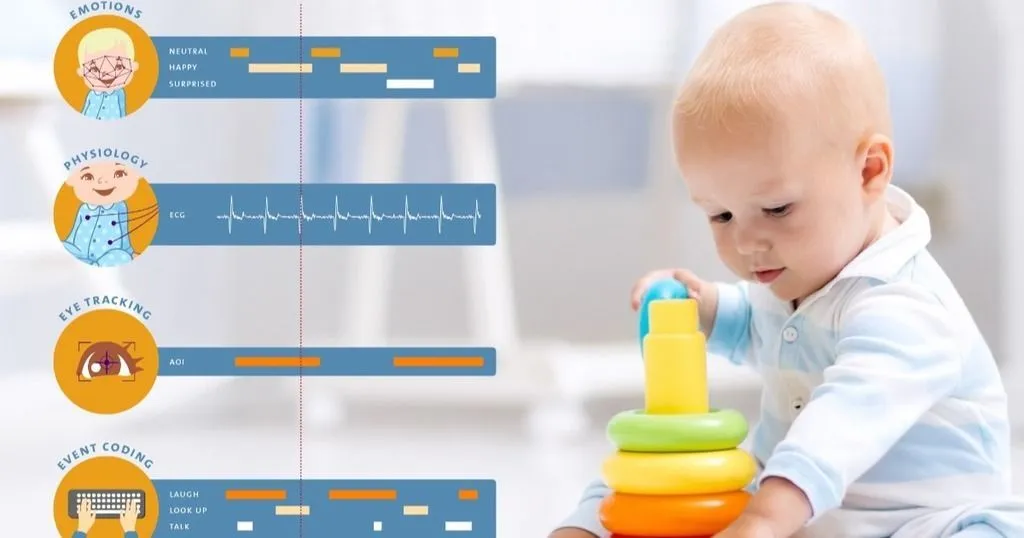Classroom observations - behavior of children with and without ADHD
The relationship between reaction time variability and observed attention in children with and without ADHD.
Posted by
Published on
Tue 13 Aug. 2013
Topics
| Classroom Observation | Coding Schemes | Neuropsychology | The Observer XT |

The relationship between reaction time variability and observed attention in children with and without ADHD
Attention Deficit Hyperactivity Disorder (ADHD) has become a fairly common subject of research in today’s society. The disorder affects working memory, attention span, and inhibitory control. There are two types, Combined and Predominantly Inattentive. In this study, 146 participants between the ages of 7 and 11 were split into three groups: ADHD-Combined (ADHD-C), ADHD-Predominantly Inattentive (ADHD-I), and a control. Tanya Antonini and colleagues looked for an association between reaction time (RT) variability and observed behavioral indicators of attention.
Building on results
Antonini et al.’s study (2013) built on the results that were presented in Epstein et al.’s study (2011). This study examined differences in RT variability between children with and without ADHD across five computerized tasks. The results of this study showed that the RTs of children with ADHD were more variable than those of the control group, and were also less accurate than the control on the majority of the tasks. This study did not have an analog math task.
Groupings
Both ADHD groups in Antonini et al.’s study had lower IQ and Numerical Operations scores and a higher number of inattentive symptoms than the control. If six or more symptoms of ADHD were present in the child, they fell into one of the categories (ADHD-I if symptoms were in the inattentive domain and ADHD-C if in both the inattentive and hyperactive-impulsive domains). To be in either ADHD group, the child must have fulfilled DSM-IV criteria.
The experiment
Children in the three groups completed five computerized neuropsychological tasks and one analog math task. The five computerized tasks that the participants took were designed to assess things like working memory, attention span, and inhibitory control. These tasks were the choice discrimination task, Attentional Network Task, go/no-go task, stop signal task, and n-back task. Though these tasks differed, they all required the participant to focus and push a button in certain events. For each neuropsychological task, five neuropsychological variables were calculated. During the analog test, behavior of the children was observed continuously using The Observer XT. Researchers looked at the amount of time the children spent on-task and off-task. The participant was considered off-task if their gaze left the sheet for two or more seconds. To measure attention, researchers calculated the mean duration of on-task behavior. Linear mixed models were then used to examine relationships between the RT variability measures from the neuropsychological tasks and the behavioral inattention observed during the analog task.
The results
For both the ADHD-C and ADHD-I groups, the mean on-task behavior was significantly shorter than that of the control group. The mean did not vary significantly between the two groups with ADHD. There did appear to be a relationship between observed attention and RT variability, which spanned all of the groups in the study, staying consistent regardless of diagnosis. The relationship did not appear to be affected by age, gender, or presence of anxiety or depression. It is a strong relationship, as the associations were viewed across the five different tasks. There was also a significant positive relationship between task accuracy and mean on-task behavior, probably due to the fact that participants are only able to achieve high accuracy if they are paying attention.
In the future
Future studies should try to assess ADHD-related behaviors outside a lab setting. They should also consider supporting their coding of behavior with psychophysiological indicators of attention to better determine where the attention of the participants is directed.
- Antonini, T.N.; Narad, M. E.; Langberg, J.M.; Epstein, J.N. (2013). Behavioral correlates of reaction time variability in children with and without ADHD. Neuropsychology, 27 (2), 201-209.
- Epstein, J.N.; Langberg, J.M.; Rosen, P.J.; Graham, A.; Narad, M.E.; Antonini, T.N.; Brinkman, W.B.; Froehlich, T.; Simon, J.O.; Altaye, M. (2011). Evidence for higher reaction time variability for children with ADHD on a range of cognitive tasks including reward and event rate manipulations. Neuropsychology, 25 (4), 427-441.
Related Posts

Measuring parent-infant behavior from another point of view

Parent-child interaction – research in a lab and on-site

